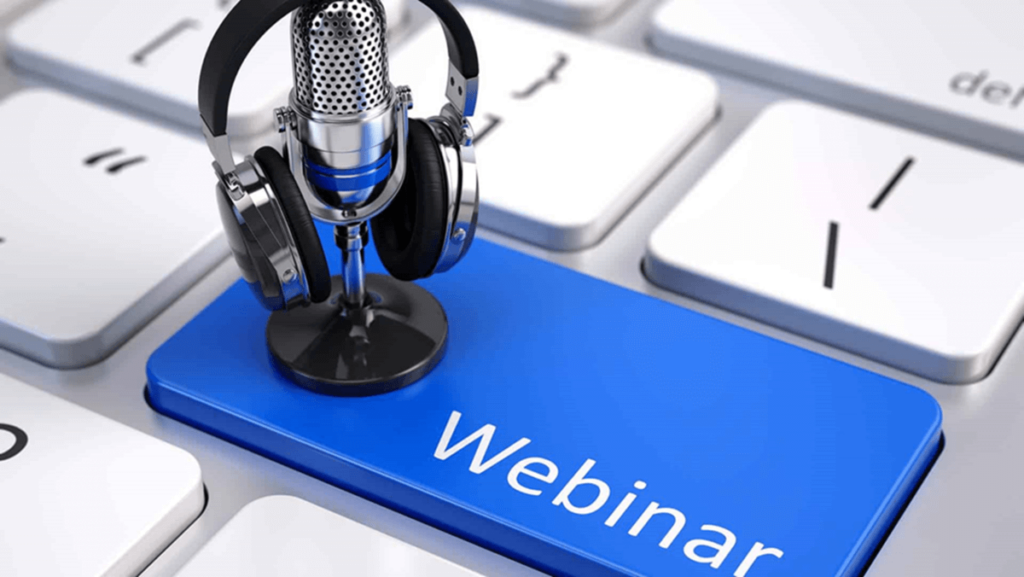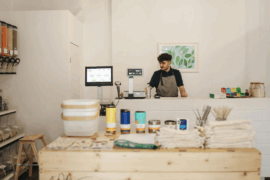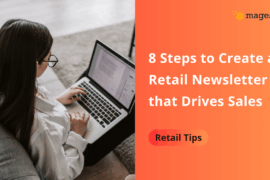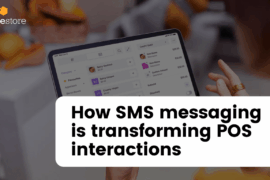Today’s business world is fast-paced and competitive. As a result, everyone is looking for new ways to grow their audience.
Thankfully, marketing enthusiasts are creating new tools daily. One of the most recent—and effective—is the webinar.
This post will discuss everything you need about webinar email invitations—tips, tricks, samples, and examples to get you started. Let’s begin!
Table of content
- What is a webinar?
- 5 creditable benefits of a webinar
- How to set up a webinar announcement
- 10 webinar email invitation examples you can use
- Conclusion: winning with webinars
First things first, what is a webinar?
A webinar is an online seminar where you share information over the internet. It’s similar to a teleconference, but everyone involved views it through a computer screen instead of over the phone.
Webinars have many advantages for SaaS and conventional businesses. Start a webinar if your organization is looking for ways to boost efficiency and effectiveness. Below are five creditable benefits of webinars.
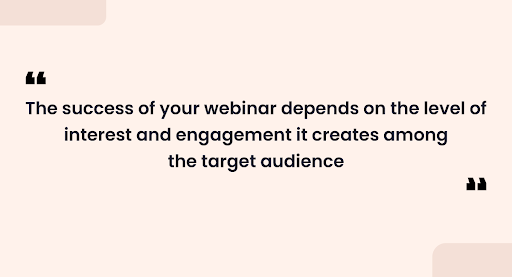
1. Boost brand awareness
Webinars play an essential role in creating brand awareness and building trustworthiness. Businesses are embracing the power of webinars as a marketing strategy to keep clients and prospects in the know. You can use webinar invitation emails to engage your audience directly, company executives, or other experts within your industry.
2. Reach a large audience
With over 40,000 searches per second on Google alone, you don’t need Google to tell you that people are looking for answers online. So, what can you do to reach a large audience? Webinars! Webinars help offer expert insights and information on a subject your audience is interested in.
3. Generate quality leads
Webinars are a great way to achieve your sales goals. They are highly visual and allow anyone who wants to learn about your product or service. A well-planned, strategic webinar can help you generate quality leads and grow your business.
4. Build thought leadership credibility
Thought leadership is a concept that has been around for a while. It is not new. However, it’s constantly evolving. In the early days, businesses and organizations used journals and other publications to share their ideas with peers. Nowadays, you can use webinars to build thought leadership credibility.
5. Subtly promote your brand
Webinar marketing is a fast-growing segment of the digital marketing world. Businesses use webinars to attract leads, establish credibility, and drive customer engagement. Today, B2B marketers and SaaS marketing agencies have formal and informal strategies for using webinar invitation emails as a sales tool.
Now that you have a clear idea of what a webinar means and its many benefits let’s highlight a few tried and tested strategies for setting up a webinar announcement.
Setting up a webinar announcement
A successful webinar announcement email sequence is structured. It follows a specific pattern and requires a well-thought-out marketing strategy.
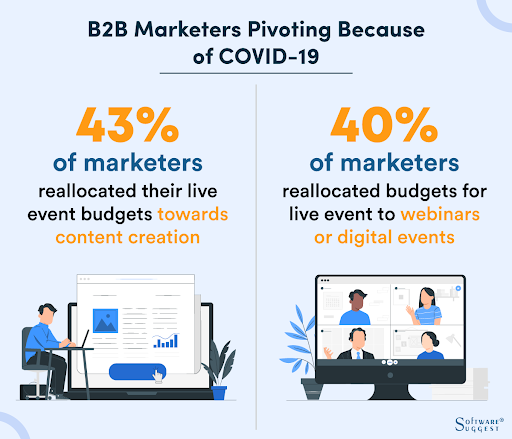
The best webinar invitation email has a unique subject line that includes a call-to-action and why people should attend the webinar.
Assuming you’ve picked a subject line, template, and theme for your webinar, notified guest speakers and mapped a content plan. The next phase is marketing—inviting major influencers, prospects, leads, and consumers to sign up for your online event or online webinars.
There is no silver bullet marketing channel. You can use business SMS messages, social media platforms, thought leadership blogs, or webinar invite emails to spread the word. But whichever medium you choose, you need a solid strategy to back it up.
Email runs the gamut for this blog. So yes, the sequence below is built to help you win with the best webinar invitation emails. (The below strategy might also work well with SMS)
- Post-registration confirmation email
- First reminder email
- Second reminder email
- Third reminder email
- Thanks for attending
1. Post-registration confirmation emails
There is this terrifying yet thrilling experience between the moment you finish planning your upcoming webinar and the second you attract your first subscriber.
It’s like going fishing for the first time. You’re casting your hook in an open river hoping the catch of a lifetime will find its way to your net. Nothing will come without the strategy—in this case, the right bait.
As with fishing, your webinar confirmation email needs the correct sign-up email to make leads blink an eye at your form, sign up and probably invite others to do the same.
A post-registration confirmation email is the first email with essential details you send to subscribers of your free webinar immediately after they sign up. This invitation email with captivating subject lines highlights the basics of your webinar with relevant information; the theme of the day, webinar date, time, guest speakers, etc. Usually ends with a call-to-action urging the recipient to sign up.
2. First reminder email
Suppose, luckily, you got a handful of leads to sign-up from your registration email. In that case, you can use your first reminder email to help sign-ups keep your webinar invitations top of mind—restate the basics and remind subscribers to block the date in their calendars.
Subscribers can always pay attention to a webinar post-registration email with the right name, title, email subject line, and an attractive webinar invitation template, mainly if the webinar details are included in this invitation email.
Otherwise, send second webinar reminder emails to make your message more attractive, assuming your post-registration email didn’t do justice to your sign-up form. Include incentives and a registration link, and emphasize the importance of your webinar.
It is also an opportunity to broaden your audience. Create an inclusive message with a fantastic subject line capable of compelling potential leads from other industries to attend. You can send a first reminder email 7+ days before the event. And If done correctly, your attendee signs the form almost immediately.
3. Second reminder email
Making a decision and standing by it is hard. We’ve all had to eat our words every once or twice. 🥺 Certainly, you wouldn’t want your subscribers returning to their words after using your webinar sign-up form.
But from experience, we can tell you that from the day they submit your webinar sign-up form to the moment they tune in to listen, they’re continually evaluating their decision.
Use a second reminder email to stay in their face. You can send a second reminder email with a clear subject line and bold call-to-action once or twice within a week after your first reminder email hits the inbox.
4. Third reminder email
It’s the day of your presentation. You and your attendees will most likely be in a big mood. 😉 Everyone is expectant, and the pressure is on you to come true. What do you think; Is this a good time to remind subscribers that you are going live in a few hours? Sure is!
Automate your third reminder email to reach subscribers or potential leads a few hours or an hour before your webinar. You never can tell; this might be the turning point for skeptical consumers.
Depending on your strategy and marketing budget, you can time your webinar reminder email, one for a few hours before your upcoming webinar and the other a few minutes before kick-off.
5. Thanks for attending!
Finally, a reason to smile. At this point, the tension and skepticism are gone. You probably had a fantastic webinar. It’s time to be thankful for your audience because they blocked their calendar to hear you speak.
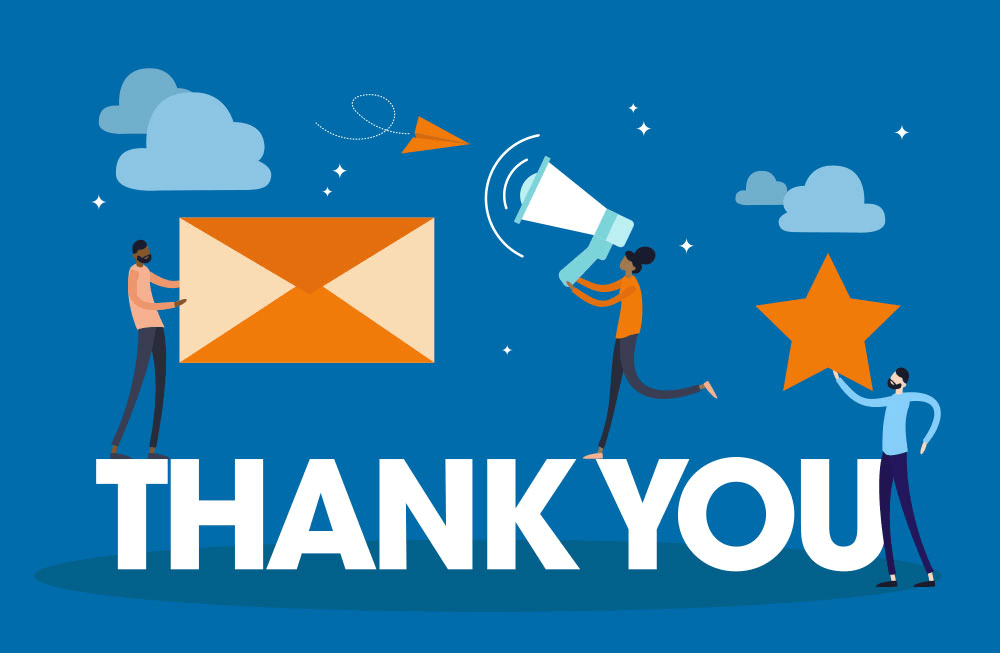
Ending your presentation with a reassuring smile and a heartfelt goodbye is okay. But it’d be nice to automate a ‘thanks for attending email.
Use a ‘thanks for attending email’ to help attendees understand your gratitude. Highlight what comes next with emphasis on content ideas that might excite them. You can also follow up with answers to pending questions and a free recording of the just concluded webinar.
Note that the information above is only for some of the webinar emails. The sequence goes a little further into numerous series of follow-ups. With that in mind, let’s look at a few webinar email invitation examples you can use.
9 webinar invitation email examples you can use
You’ve probably seen many webinar invitation email templates, designs, and layouts. So, you know it’s challenging to stand out from the crowd. To help you hit the ground running, below are a few webinar email invitation tips and examples to draw inspiration from.
1. Include links to upcoming events
Not all webinars are thumb-stoppers. Sometimes, clients will effortlessly scroll past your webinar email. Don’t feel let down. It’s just an invitation, not the end of the world.

You can further take your webinar email endeavors by including links to upcoming events. This way, guests not interested in your present webinar can get a rain check for future events—a win-win for all.
2. Keep the excitement alive
Webinars are synonymous with seminars. To get people to attend, you must keep them in the Groove.
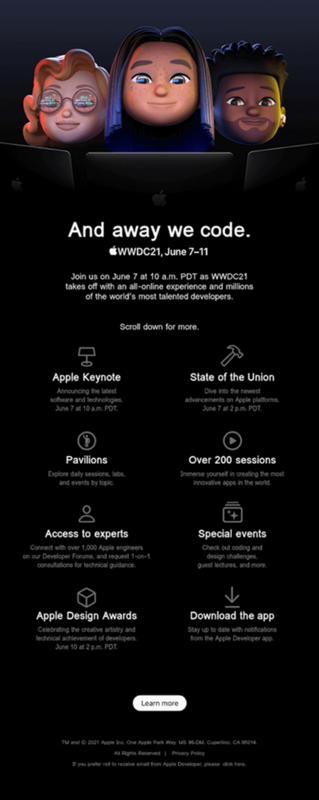
Before drafting your webinar email, list exciting offers your audience would appreciate. After the formalities of a webinar email—introducing guest speakers and webinar content, date, time, etc.—leave room for extra information.
In this extra space, include offers beneficial to your audience. It can be access to an exclusive portal, discount opportunities, or another special event. The goal is to keep the excitement alive for as long as possible.
3. Leave room for the after-party in after event follow-up email
We all want our webinars to be the talk of the town. We’d love to get as many people as possible to attend, interact and share ideas. But as you might have guessed or already known based on experience, only some people who sign up will attend.
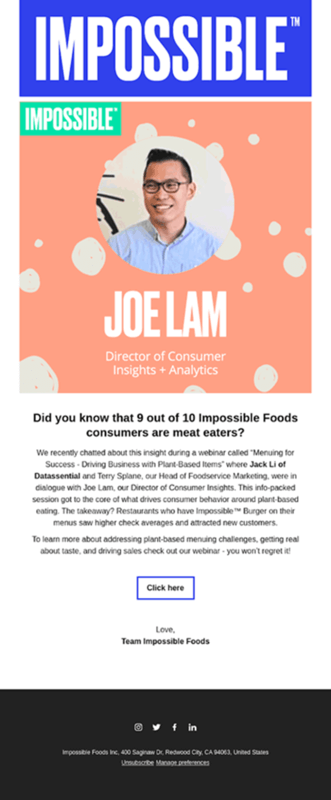
Create an after-event follow-up email. It would help you curb your ego and keep the momentum going even if the turnup wasn’t as enthralling as expected. Also, include a link to your just concluded webinar and a summary of all the exciting information subscribers that missed it would love to hear.
4. Create a sense of urgency in the webinar invitation email
Nobody wants to miss out or be left behind. Everyone wants an equal or an exuberant share of the cake. The least you can do with your webinar invitation is make your intended audience salivate for what’s to come.
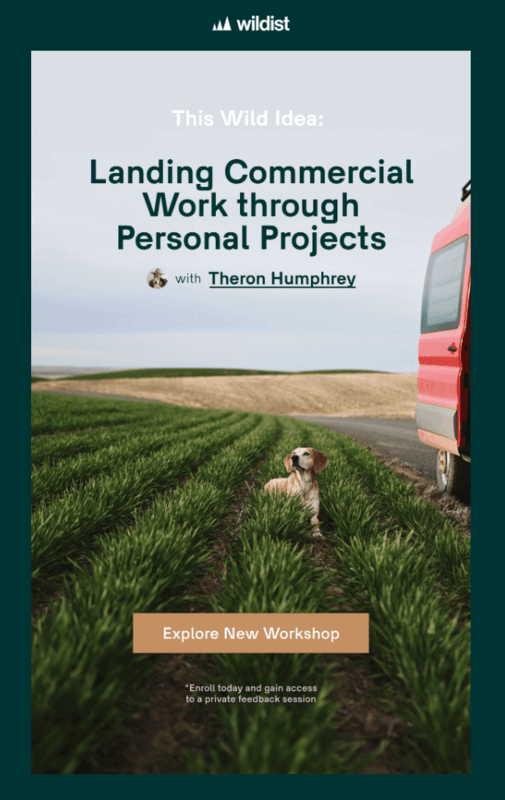
Position your webinar email with a sense of urgency. Include the number of spots available and how many are left. If it’s a paid webinar, you can include discounts, but don’t get to sales with your email—you don’t want your intended audience to feel like you’re trying to reel them into a sale.
5. Be clear on what attendees will learn
Have you ever walked into an event, classroom, or seminar you know nothing about? You feel a bit of unease down your nerves. Everything looks new, different.
You want to join the groove but have no idea how. You get irritated, shrug your feet, and maybe steal a glance at the person sitting next to you, wondering if they are just as confused as you are.
From experience, we can tell you that you want your webinar attendees to feel differently. Keeping them in the know from the get-go would do you much good.

Using your webinar invitation to highlight what your webinar brings to the table creates a feeling of belonging. This way, your audience knows what they are walking into. They are well-informed and can help make your webinar presentation a memorable experience.
6. Plain and simple online invitation is just as magical
There are lengthy webinar invitations, likewise short ones. It doesn’t matter which you choose—don’t get too excited about your presentation and forget to include the essential information.
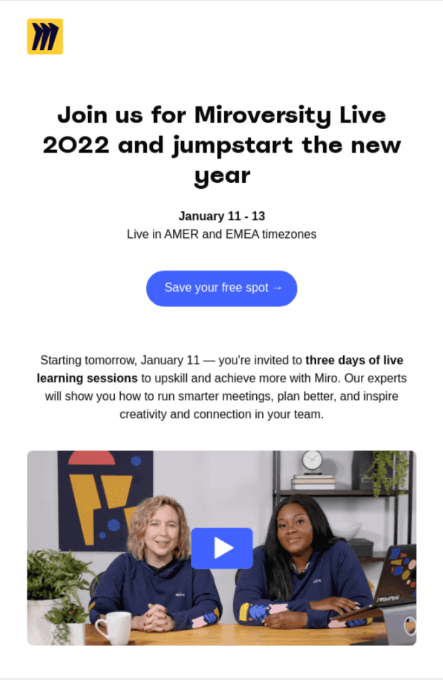
These are the rules. Include a short description of your webinar event; state the theme, date, and time. Make a list of guest speakers, if any. Wrap it up with a clear call to action and links to your social media handles or mobile app.
7. IBM email with webcast calendar
People will not always be interested in your webinars. Some topics might not excite them.
But that’s not on you. To avoid getting worked up when guests ignore your webinar invitation, include a webcast calendar in one of your invitation emails.

A webcast calendar provides information about your present webinar and details about upcoming events. So, if your current webinar doesn’t sit well with a portion of your audience, they can quickly sign up for one that suits them.
8. Excite your event audience with tough questions
Questions have a way of cutting through the noise and reaching home. Remember those fleeting moments when you lacked clarity about something? Surprisingly someone popped a question, and suddenly, with no conscious knowledge of the ‘how or why,’ you’re glaring with ideas.
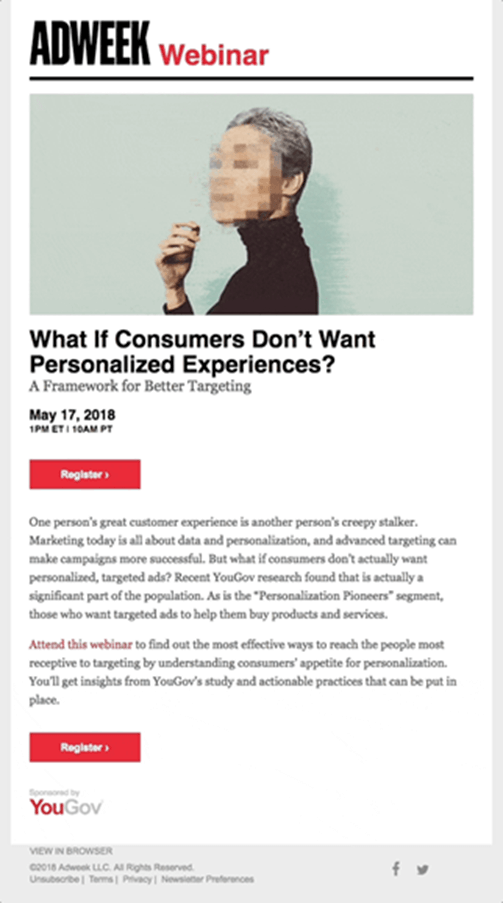
When writing a webinar invitation, lead with the tough questions. Use them to inspire reactions from your audience. You can test multiple questions in your post-registration and first reminder emails before leading with those that perform best in subsequent emails. Don’t forget to personalize the subject line, which helps increase the opening rate by 26%. (Source: Sender)
9. Wrap up the email with ‘thanks for attending to webinar’
Don’t go out blank. Your audience wants a final goodbye—a take-home that shows they attended your webinar, something for the road. Wrap up your webinar invitation sequence with a thank you email showing appreciation.
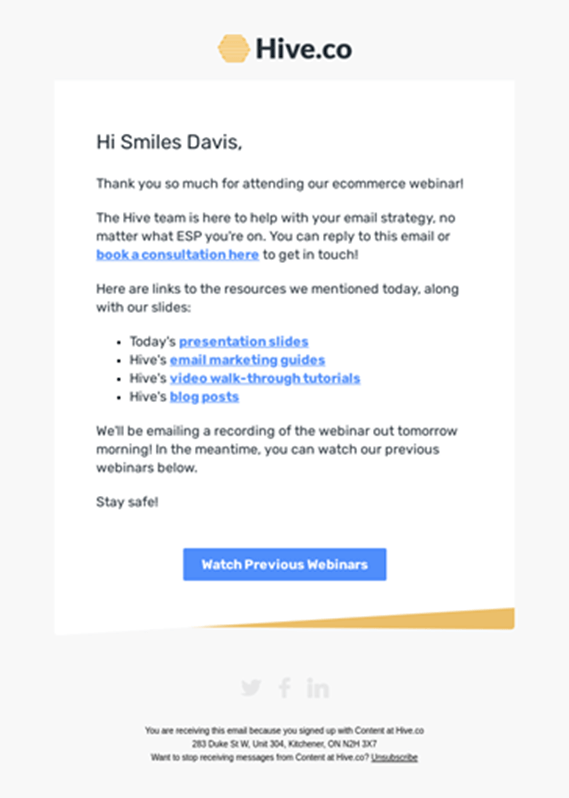
Your ‘thank you email’ doesn’t need to be bulky. One or two lines portraying your important message and cheering appreciation for their attendance will do. You can spice things up by including a playback link of your just concluded webinar or limited information about upcoming webinars.
How to win with webinars
The pandemic triggered a surge in webinar marketing, caused fatigue, and made many consumers skeptical about webinars.
However, the success of your webinar depends on the level of interest and engagement it creates among the target audience.
You can win with webinars by working with renowned marketing experts and email marketing software that allows you to send more emails while spending less. Good luck!

Skirmantas Venckus is a writer by day and a reader by night. He hates talking about himself in the third person. He is also the growth hacker at Sender.net – the email marketing provider focused on user-friendliness, affordability, and utility.

